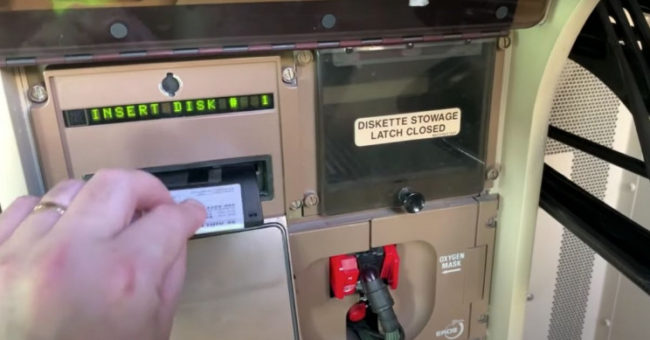
Airplanes require navigational data. Sometimes that data comes from the pilot, but in today’s modern airplanes there’s GPS systems that help. Back when I was a member of the flying club that owned two 1966 Piper Cherokees, it was my job to update the Garmin 530W GPS unit every 28 days with charts and other waypoint data. We purchased this via subscription to a company that provided that sort of thing, and I downloaded it to a proprietary card that was updated on the 28-day schedule. The file wasn’t very big but it was a bit of a hassle downloading it on a Mac. I’m not sure I would be able to accomplish the task on an iPad today.
Recently, a team of security engineers were allowed to look at the systems on a Boeing 747. While they found a clear delineation between the passenger entertainment systems and the aircraft’s control systems, no one is going to be able to hack into the cockpit from the monitor in the seat back in front of them, they also found that navigational data is still loaded into the avionics via floppy disk.
Hey, if it works and is reliable, why change it?
Of course, there are plenty of online “reporting” sites that are hyping this up as some sort of grave danger to the safety of the Boeing 747. Hyped up headlines generate ad clicks and everyone wants to get rich by belching out a few words on a website and raking in the bucks via advertising.
In that regard, we live in such despicable times.
The truth of the matter is, a floppy disk in 2020 is just as functional and safe to use as a floppy disk in 2000. Navigational chart data from 1995 is about the same size as navigational chart data in 2020. Honestly, I’d rather this data was loaded in a tried and true method rather than trying to connect a 747 to the airport wifi and downloading the data. That’s where you have problems; wifi signals are much more prone to errors or even “hacking”.
If a tried and true method has worked for decades without incident, there’s no reason to move to newer technology simply for the sake of change.
I think it’s quite nifty that floppy disks are still used today. It’s a critical part of what we’d call “sneaker net” back in the day, physically copying files from one computer to another.
Sometimes you just have to get the job done.
